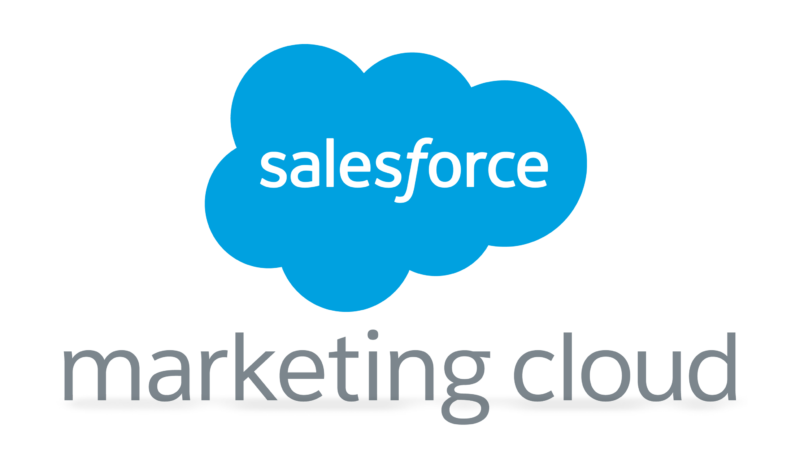
Email Verifier
Have you ever wondered if there’s a way to verify if email addresses are real and active before adding them to your list? Many email marketers have the same concern with the number of bots that sign up for email lists and customers who may put in fake emails to get around filling out signup forms. After all, people can change their primary email addresses and stop using accounts altogether. Invalid emails on your list lower your deliverability and flag common spam triggers that can drastically affect the success of your campaigns. The solution for this issue is an email verifier at the point of interaction.
Improved Deliverability Rates
Significantly reduce bounce rates by using email verification to ensure you are sending to valid, active email addresses. This leads to improved deliverability across your email list, helping more of your emails reach active subscribers in their inbox.


Enhanced Sender Reputation
ISPs and Email Service Providers consider bounce rates and spam complaints when determining a sender’s reputation. By using AudiencePoint’s email verification to keep the garbage out of your list, you will reduce bounces and spam complaints, thereby improving your sender reputation.
Better Engagement Metrics
A clean and verified email list leads to higher open rates, click-through rates, and overall engagement. These metrics are crucial for understanding the success of your email marketing campaigns and optimizing future efforts.


More Accurate Than Other Tools
Other email verifiers use a separate domain to ping a server and check for bounces. We are actively tracking subscriber engagement with their inbox, providing more accurate verification and insights on the value of your new recipient before you send your first email.
Email Verification Personalized Down To The Subscriber

2nd Party Data Pool
Our 2nd party data pool powers our email verification tool and sets us apart from other email marketing tools. Our verification hasn’t been purchased or recycled, we provide high value insight at scale.

Demo Lead Gen Multi Step
What Our Customers Say
“We suppressed the dormant Gmail addresses and saw a dramatic improvement in our Inbox placement! Our team is glad to have made an impact with your tool – so thank you!”
– Email Marketing Manager at a major insurance provider
CEO “LOREM”
“We are pleased with how AudiencePoint has approached privacy for our customers, and we believe their approach is compliant with GDPR, CCPA, and is also positioned to comply with future privacy regulations.”
Founder and President of a leading digital marketing agency
CEO “LOREM”
“AudiencePoint helped us identify our lapsed subscribers that were still mailable. Because of their data, we were able to increase the number of reactivated subscribers across all of our enterprise brands.”
Director of Email Marketing at a national e-commerce brand
CEO “LOREM”
Partners
Our pre-built integrations and API make it easy to connect to your ESP so you can begin building engagement and driving revenue quickly.




Email Verification Personalized Down To The Subscriber
Is There a Way to Verify an Email Address?
There are several ways to verify an email address, the most common being email address verification tools. Many email verification tools are able to take action and verify that someone inputs a real and valid email before they are added to your list. This lowers the possibility of people (or bots) subscribing to your list who have no interest in your content.
Additionally, there are also bulk verification tools that can verify already established email lists and even manual ways you can verify emails. The following sections of this article will cover each of these options in more detail.
How Do I Manually Verify an Email Address?
First, let’s start with the one many marketers will be wondering about, manually verifying emails. Some of the manual verification methods can be free or cheap, so it’s common to wonder if it’s a viable option. Ways you can manually verify an email address are:
- Send a test email: One of the most common manual verification methods is sending a test email from a different account that isn’t your primary domain. Usually, if you send an email to an invalid address, you’ll get some sort of error message that bounces back, such as “the server couldn’t process your request” or “invalid email address.”
- Check usernames and syntaxes: Another manual verification method involves checking the usernames and syntaxes of each email address. Sometimes, fake emails will have random strings of numbers or letters or misspelled syntaxes like “@ouutlook.com.”
- Ping the server: This one is more technical, but it can help verify if an unknown server is active without sending an email. For this, you would use tools like PuTTY or Telnet to ping the server associated with the email’s domain and see if you get a positive response back.
- IP address and DNS lookups: Tools like MXToolbox can also be used to perform IP address and DNS lookups on the account and domain that signed up for your list. Once again, this is a more technical process that requires learning how to use a tool for manual lookups.
While all these manual processes are great, they aren’t always the most accurate, and they also aren’t a very efficient use of your time if you’re running a business. A better option would be to invest in a high-quality email verifier to do the job.
Can You Validate an Email Address Without Sending an Email?
Many email marketers wonder how to verify email addresses without sending an email. Doing so can be a good idea if you’re trying to avoid getting the attention of spam bots that could begin sending you junk mail upon you emailing them.
Some of the abovementioned manual verification options, like pinging the server, IP address lookups, and DNS lookups, can all be done without sending an email. However, these options are all highly technical and time-consuming.
A better option would be something like a bulk email verifier that can scan through your established email list and quickly run through many detailed processes to verify that an email is active and will do the technical lift for you.
What Is an Email Verification Tool?
Email verification tools are software programs designed to identify if email addresses are authentic. Typically, email verification tools will implement processes before someone signs up for your list. This would be in the form of a quick email verification via a code that the recipient has to enter or a button they have to click from an email sent to the listed email address.
Most verification processes are very fast and easy for the consumer to go through. Plus, when you implement a verifier, you can be assured it benefits not only you but also the customer. It helps ensure that they entered the correct email address so they can get account updates and regular newsletter content from you. It’s a win-win.
What Is a Bulk Email Verifier?
While the verification tools that take care of the process before an email is added to your list are the best, there is also a need for bulk verifiers. Many marketers establish email lists without being aware of the ramifications of low deliverability and the ensuing drop in email engagement that is difficult to recover from.
Bulk email verifiers can help by running through several processes that help identify which accounts on your list have active email addresses and which are fake. Those processes would be many of the manual verification methods we outlined above, like DNS lookups, server pings, IP address lookups, and more.
What Is a Good Option for Bulk Email Verification?
If you’re looking for help analyzing an already established email list, AudiencePoint can be a great resource. AudiencePoint’s email insight software offers a tool called ListFit that tracks and analyzes subscriber activity. It can be used to identify and suppress dormant email addresses to improve your deliverability rates.
One of the benefits of using AudiencePoint is it takes the analysis of accounts a step further by using second-party data. This is essentially a data pool our software has access to that analyzes how email addresses are engaging on content from several different email lists. It’s a more accurate way to determine if accounts are active.
In addition, our tools can also be used for tracking key metrics like open rate while isolating Apple MPP opens from reporting. Nowadays, Apple MPP causes emails sent to the mail app on Apple devices to report the email as opened since it is first run through proxy servers before landing in inboxes.
Unfortunately, these effects of Apple’s MPP cause inflated open rate metrics and make it hard to determine if subscribers are actually active. By isolating Apple MPP opens, AudiencePoint provides you with more accurate metrics and better methods of determining which subscribers are active, who needs to be re-engaged, and which accounts should be removed.
What Is an Email Checker?
Some in the email marketing industry will use the term email checker interchangeably with email verifier or email verification tool. In that case, it’s simply the same program that can be used to put verification methods in place before someone is added to your list.
Others also use email checker as a term for programs where you can copy and paste single or multiple email addresses in and verify if they are real. It’s similar to bulk verification tools.
While there are some email checker programs available that are free, they tend not to be the most accurate, especially for the complex needs of email marketing. It’s better to go with established email verification methods and insight software tools like AudiencePoint, which uses the most up-to-date processes and data.
Is There a Free Email Checker?
In the quest to find the best email verification service, many email marketers wonder if they can find an email verifier free that works well. There are several verifiers that you can use for free. However, keep in mind that, as with any free product or service, they do have their limitations.
As far as a standard verifier that sends out an email the moment someone signs up for your list, you’ll have several options. Many free-to-use email marketing platforms offer verification options to help you build a healthy list. Mailchimp and Brevo are both free email marketing platforms that can send a verification email upon signup with a free plan.
The problem with Mailchimp and Brevo verification is they only verify the email when someone signs up for your list. You’ll have limited data after that to tell if subscribers are still active or later abandon the email address they used previously. That’s where the need for bulk verification tools comes in.
Finding free bulk verifiers is much trickier. Building a bulk verifier is more difficult, so many companies don’t invest much time in one they offer for free. The best service with a free option is ZeroBounce, which can authenticate a list of emails and remove the invalid ones to help you improve your email deliverability.
However, ZeroBounce’s free plan limits how big your email list can be and how often you can verify your list, and it isn’t always the most accurate option compared to paid tools. So it can be a good one to start with, but keep a goal in mind to upgrade to a paid option as your company grows.
What Does Catchall Mean in Email Verification?
Catchall is a common term in email verification because this can be one of the most frustrating types of servers for email marketing professionals to deal with. A catchall server is an email account that accepts all emails sent to the domain.
The catchall was originally created to be a helpful resource for companies with several employee accounts, so even when employees left and their emails were terminated, any mail that was sent to the domain of the company could still be received in the catchall.
However, today catchalls are mostly used by spammers who want to input fake email addresses to target accounts that they can send junk emails to. It’s one of the common ways emails can pass through email verifiers without the emails sent to them bouncing or the address appearing as fake since the catchall account still receives all messages.
While identifying catchalls isn’t always easy, implementing insight software like AudiencePoint can help immensely. With AudiencePoint’s second-party data and ability to suppress dormant emails, you have a better chance of reducing the impacts of catchalls and improving your deliverability.
How AudiencePoint Can Help
AudiencePoint is an email insight software that uses three easy-to-implement tools to improve your email marketing efforts.
As mentioned throughout this article, AudiecePoint’s ListFit is an excellent tool for tracking subscriber activity, identifying accounts that can be re-engaged and dormant emails that should be suppressed. All of these aspects will improve your engagement and deliverability.
Additionally, AudiencePoint offers tools called Real Time Optimization and Send Time Optimization. These tools provide accurate insights in real-time as your subscribers engage with content and help you optimize when you send content to get the highest possible engagement rates.
If AudiencePoint sounds like it may be the solution for your needs, contact us today to learn more about getting started.
Related Articles
Related Resources
Contact Us